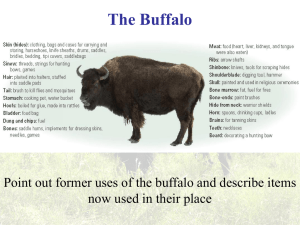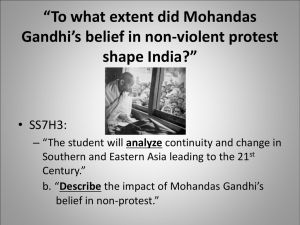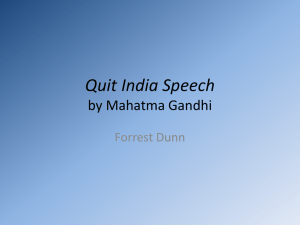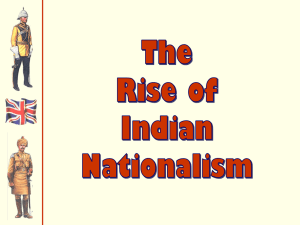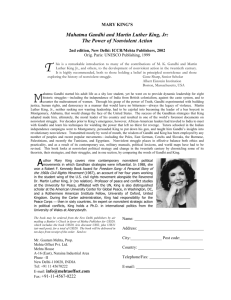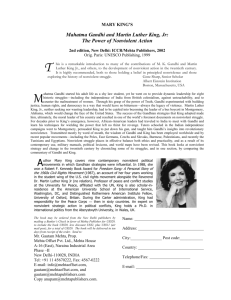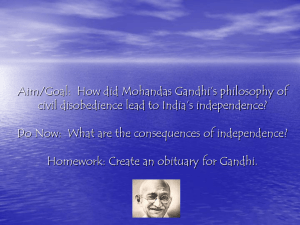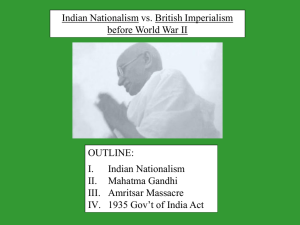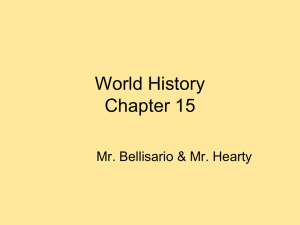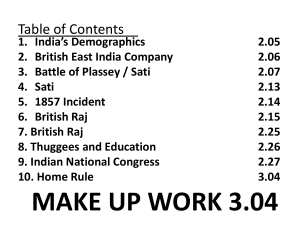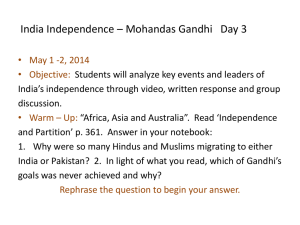MS- Presentation
advertisement
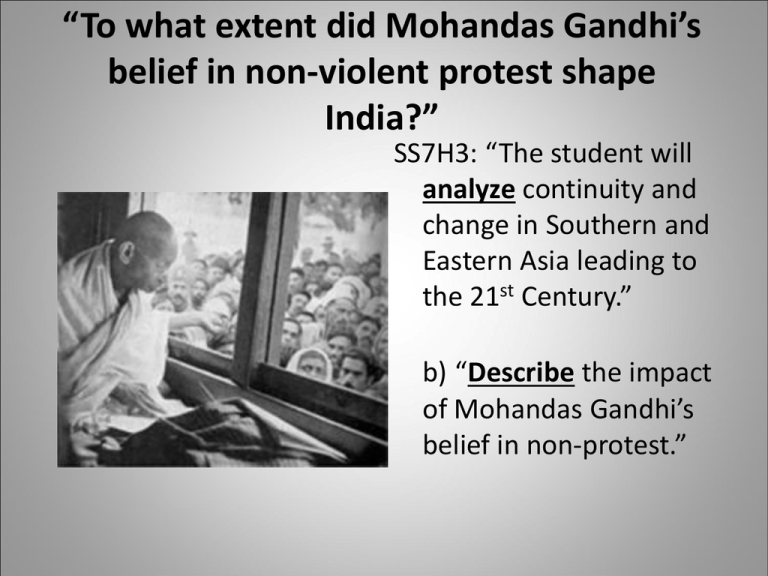
“To what extent did Mohandas Gandhi’s belief in non-violent protest shape India?” SS7H3: “The student will analyze continuity and change in Southern and Eastern Asia leading to the 21st Century.” b) “Describe the impact of Mohandas Gandhi’s belief in non-protest.” King and Gandhi “Nonviolence is the answer to the crucial political and moral questions of our time…” - Martin Luther King, Jr. “I object to violence when it appears to do good. The good is only temporary; the evil it does is permanent.” - Mohandas Gandhi Guiding Questions (King Quote) “Nonviolence is the answer to the crucial political and moral questions of our time…” - Martin Luther King, Jr. • What do you remember about Martin Luther King, Jr. from 5th grade? • How did Martin Luther King, Jr. lead the civil rights movement in the U.S.? • What do you believe would have occurred if King used more violent methods to influence the civil rights movement? Guiding Questions (Gandhi Quote) “I object to violence when it appears to do good. The good is only temporary; the evil it does is permanent.” - Mohandas Gandhi • What did Mohandas Gandhi believe about violence? • What do Mohandas Gandhi and Martin Luther King, Jr. have in common? • How do you think that Gandhi led the Indian independence movement against the British? Discussion Excerpt: “I Still Believe in Non-Violence” “For the non-violent soldier must have the capacity to bear severe beatings, torture, mutilations, starvation and worse, and accept these without fear and without answer against those who oppress him.” Gandhi, M. K. (1943, June 26). I still believe in non-violence. Collier’s, 17. Excerpt: “Congress Responsibility For The Disturbances, 1942-43” At the risk of some repetition, it is necessary to emphasize again the fact that Mr. Gandhi knew that any mass movement started in India would be a violent movement. He knew this from his bitter experience of the movements he had led ten and twenty years before. In spite of this knowledge, he was prepared to take the risk of outbreaks of rioting and disorder—a risk which in his writings he tried to minimize but in his mind he must have estimated correctly. The Indian Annual Register, 1942, Vol. II, pp. 199-20O Gandhi Articles • Read your selected article: – “I Still Believe in NonViolence” – “The World Will Hear More of Gandhi” • While you read your article, complete your “Reading Guide.” Summary • Students will work in cooperative groups of 3. • Share your summaries with your group members and draw conclusions about the impact of Gandhi’s belief in non-violent protest. • As you listen to the other summaries, identify similarities and differences that are discovered. Discussion RAFT Activity “I Still Believe in Non-Violence” “The World Will Hear More of Gandhi” • Role: • Role: – A farmer in India – A British soldier who is stationed in India • Audience: – Other Indian farmers • Audience: • Format: – Himself – Letter • Format: • Topic: – Journal entry – Why they should follow Gandhi in his non-violent protest against the British • Topic: – His personal struggle against the non-violent protestors Discussion
